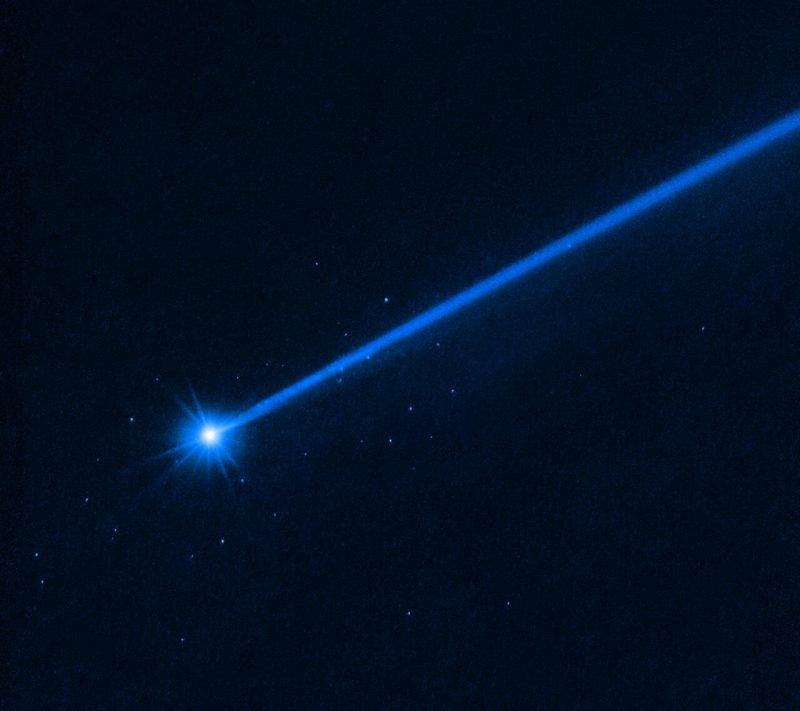
Boulders from asteroid Dimorphos
NASA’s DART (Double Asteroid Redirection Test) mission was the first of its kind to see if we could impact and nudge a potentially dangerous asteroid off course. The mission was a huge success, and various observatories caught the impact and aftermath. On July 20, 2023, the Hubble Space Telescope released an image taken nearly four months after the impact. It shows 37 boulders knocked loose from the collision. NASA said that these boulders are among the faintest objects Hubble has ever photographed inside the solar system.
The aftermath of DART
The “smashing” mission is complete, but studies of Dimorphos continue. In 2024, the European Space Agency (ESA) will launch a follow-up mission, called Hera, to observe the aftermath. As we await more closeup images of the battered asteroid, Hubble is providing its own data.
Scientists said that the boulders launched from the asteroid in the collision range in size from 1 to 6.7 meters (3 to 22 feet). The debris is slowly drifting away from Dimorphos at a speed of about 1 kilometer per hour (0.6 miles per hour). The freed boulders only make up about 0.1% of the mass of Dimorphos.
From the last images we could see as DART zeroed in on its target, the surface of Dimorphos consisted of many such boulders. The scientists believe the boulders in the new Hubble image were some of those that were loose on the little asteroid’s surface. Dimorphos itself is a little moonlet of a slightly larger asteroid, Didymos. Dimorphos is probably leftover material from Didymos, and more like a rubble pile resembling a bunch of grapes than a solid object. Hera should give us a better idea of Dimorphos’s structure and DART’s impact crater.
How did the boulders escape?
Scientists aren’t sure yet exactly how the boulders came away from the surface. The press release said:
It’s not clear how the boulders were lifted off the asteroid’s surface. They could be part of an ejecta plume that Hubble and other observatories photographed. Or a seismic wave from the impact may have rattled through the asteroid – like hitting a bell with a hammer – shaking loose the surface rubble.

Bottom line: The DART mission impacted a small asteroid named Dimorphos in September 2022. In December 2022, Hubble captured these boulders from Dimorphos drifting away after the collision.











